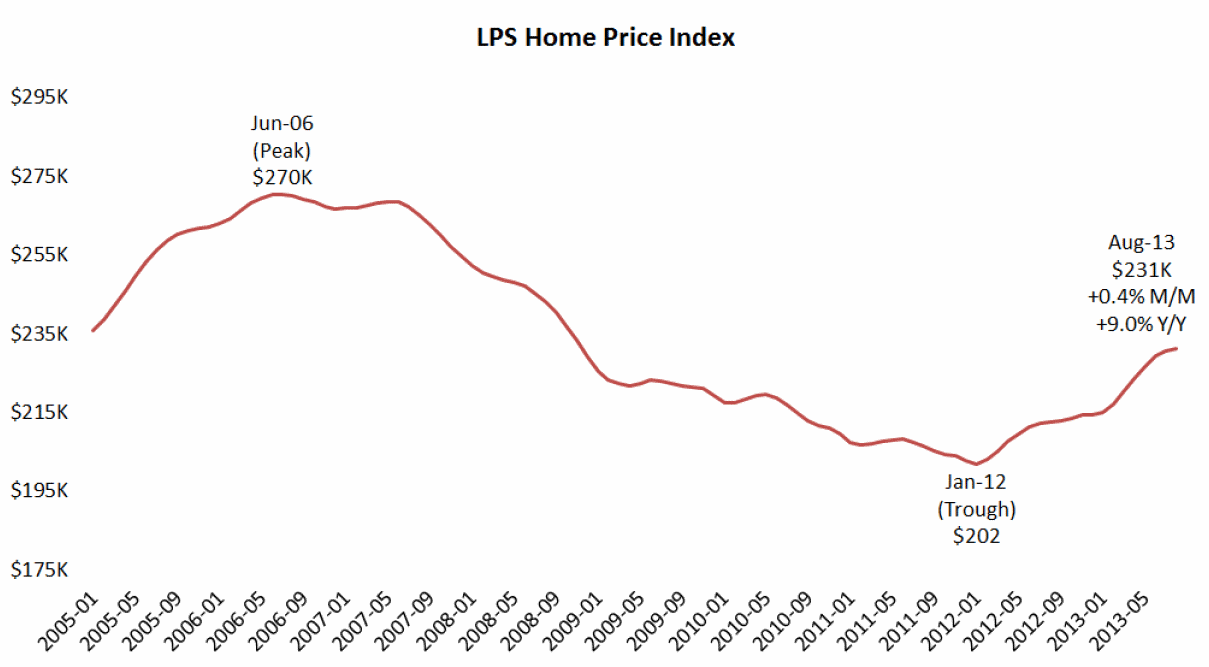One of the big worries in the early days of the housing crises were the large numbers of adjustable rate mortgages originated during the boom years that were scheduled to reset in stages over the upcoming years. What would happen to home prices, delinquencies, and foreclosures once these loans, many of which also carried extra-low teaser rates or negative amortization, when those resets happened?
New data from Lender Processing Services (LPS) appear to show that those worries are largely in the past. LPS's September Mortgage Monitor reports that 63 percent of outstanding hybrid adjustable-rate mortgages (ARMs) have already reset from their initial interest rates and of those that have not reset, three-quarters were originated post-crisis when most loans had credit scores of 760 and above.
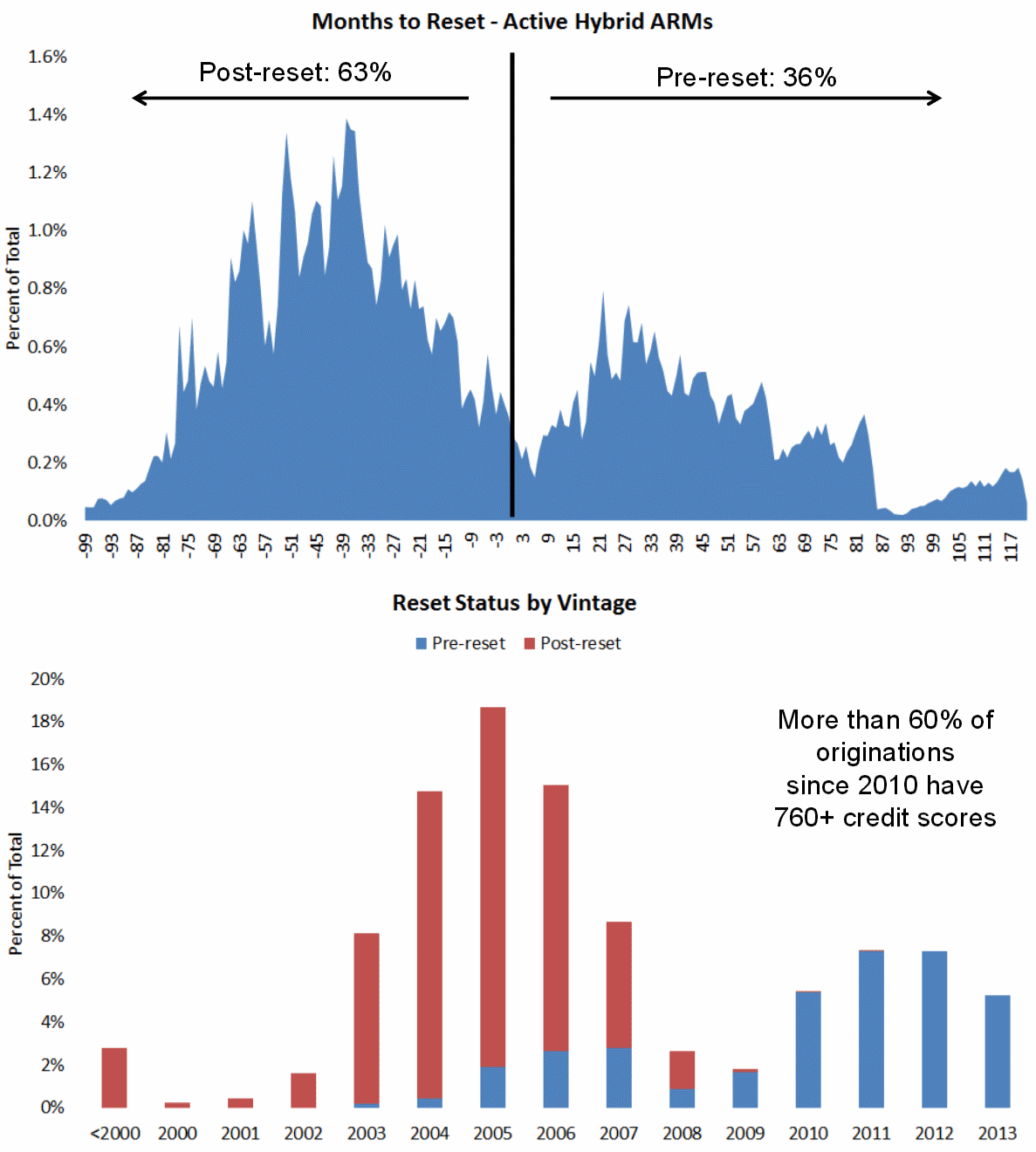
As LPS Senior Vice President Herb Blecher explained, these numbers bode well for the performance of ARMs if mortgage interest rates rise as expected. "Only 36 percent of outstanding hybrid ARMs are in a pre-reset status, and the vast majority of those are coming from newer vintages where loan quality has been pristine."
The remaining pre-reset loans originated during the bubble years where underwriting criteria was not nearly as strict as post-crisis criteria. It is these borrowers who could be most negatively impacted by upward resets in their monthly mortgage payments but LPS sees little cause for concern. The company found that interest rate indices would need to rise on the order of 300 basis points for most of these pre-crisis hybrid rates to increase. Most of these borrowers may be looking forward to their payments going down rather than up, although contractual rate floors may limit the decreases
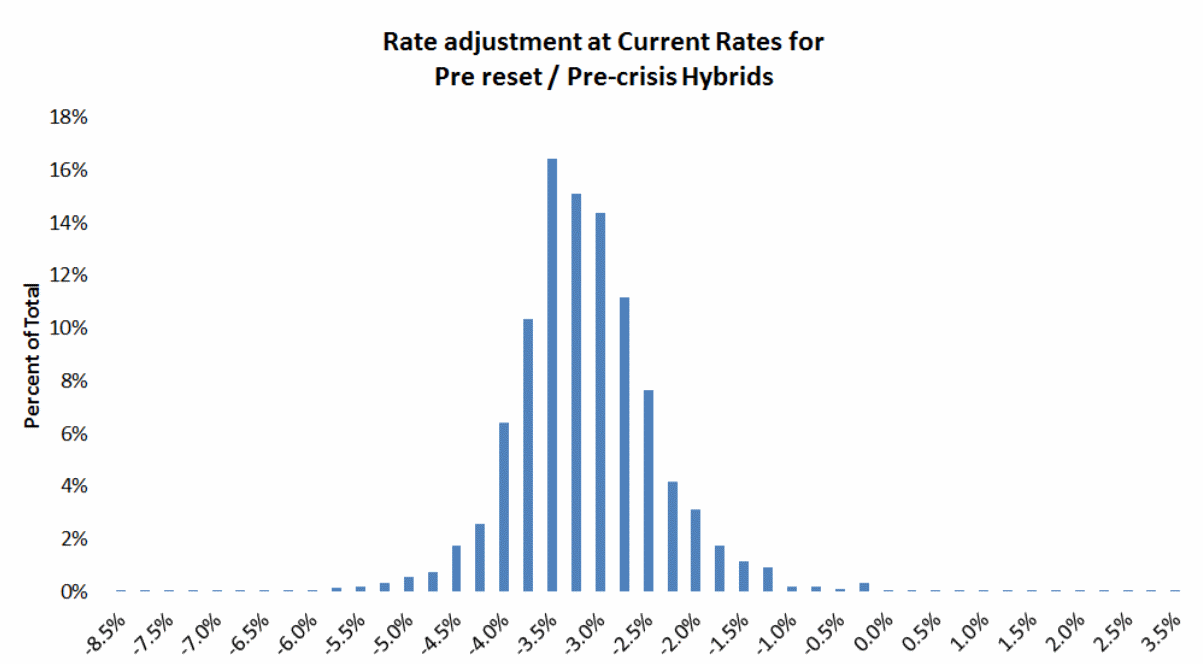
Resets were one of four areas LPS focused on in the latest Monitor. A second area was prepayment rates and their response to rising rates. LPS found prepayments are at their lowest level since May 2001 as rates continue to rise.
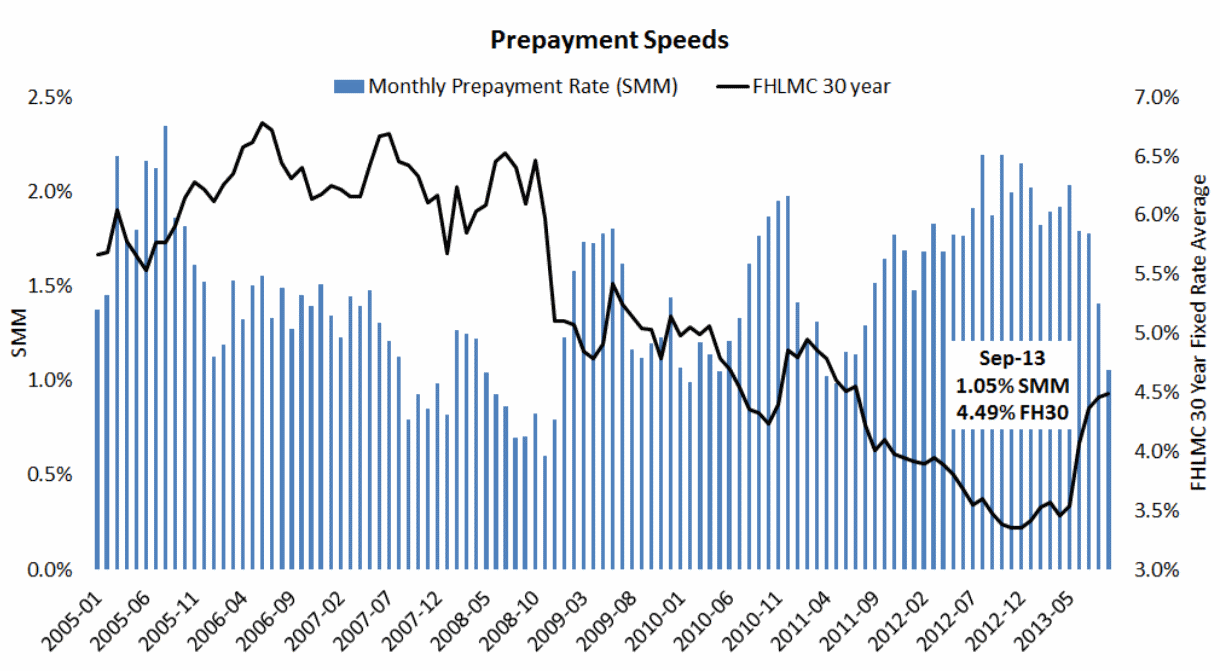
The decline was evident across all investor categories, with GNMA and GSE segments seeing the steepest drops - both down over 50 percent since rates began their climb back in May.
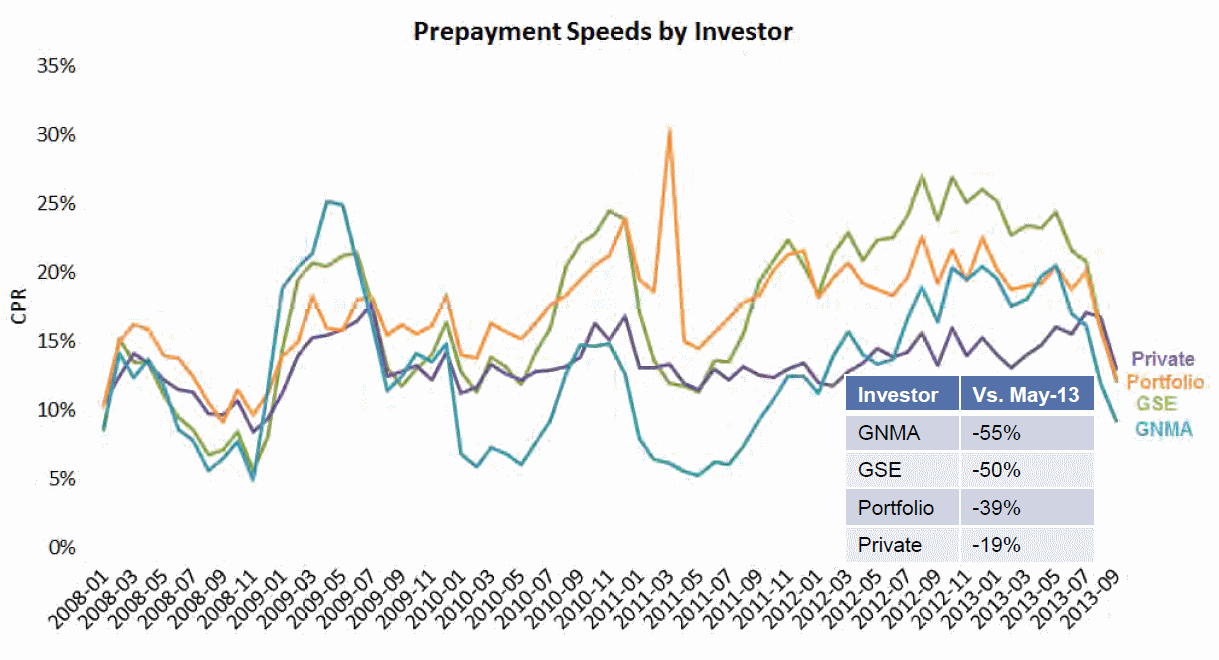
Prepayment of loans with loan-to-value ratios (LTVs) in excess of 100 percent - so call HARP-eligible loans - have dropped sharply as well, declining over 40 percent.
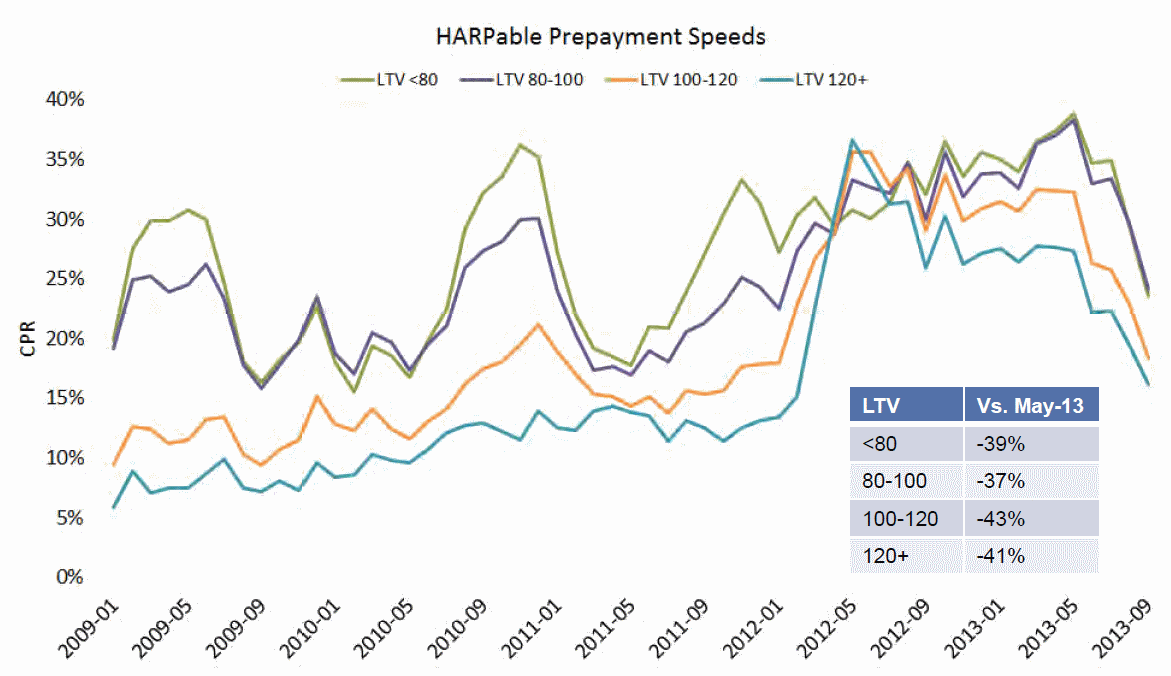
Blecher said that since interest rates drive refinances and refinances have been driving prepayments and originations, overall origination activity has declined as well, down more than 9 percent from last month and nearly 18 percent year-to-date.
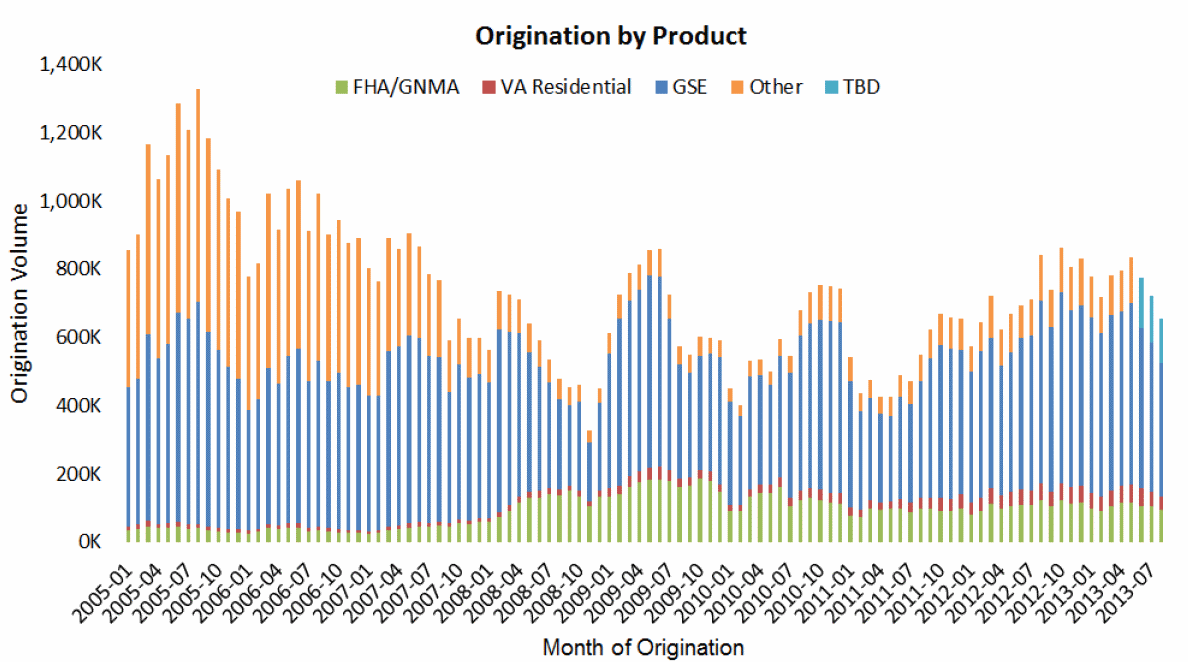
The third area on which LPS focused was trends in delinquency and foreclosure rates which were previously covered in its First Look report last month. Delinquencies increased 4.3 percent from August to 6.4 percent, in-line with seasonal patterns, but are still down 9.9 percent for year-to-date 2013 and 12.6 percent compared to September 2012.
The foreclosure rate declined 1.3 percent to 2.63 percent and is down 23.6 percent year-to-date and nearly a third from a year earlier. Foreclosure inventories continue to improve and new problem loans remain close to pre-crisis levels.
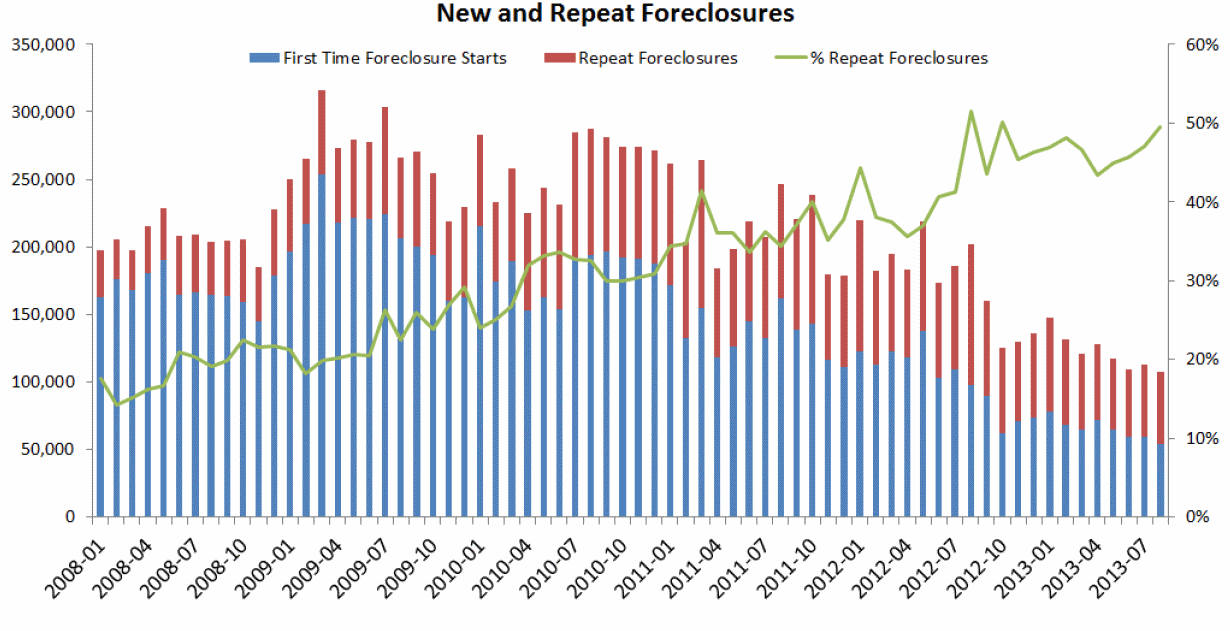
Both delinquency rates (non-current rates) and foreclosures remain exceedingly local phenomena.
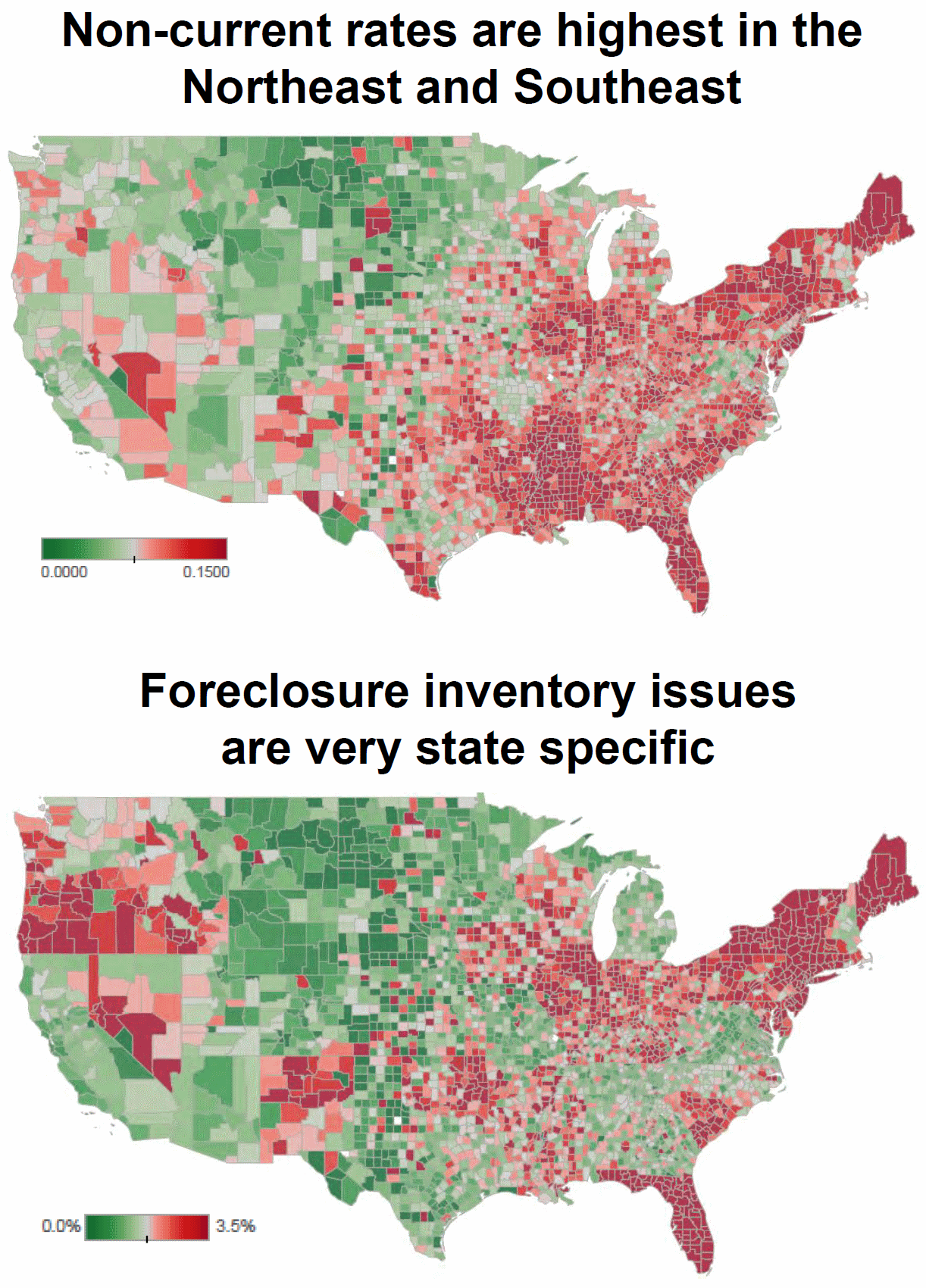
Finally, looking at home prices and sales, LPS found that prices are up about 9 percent from September 2012 but increases are starting to slow as they always do in the fall. Home sales remain high but the share of distressed sales continues to decline, falling from about a third of all sales in 2011 to 19 percent in September.
